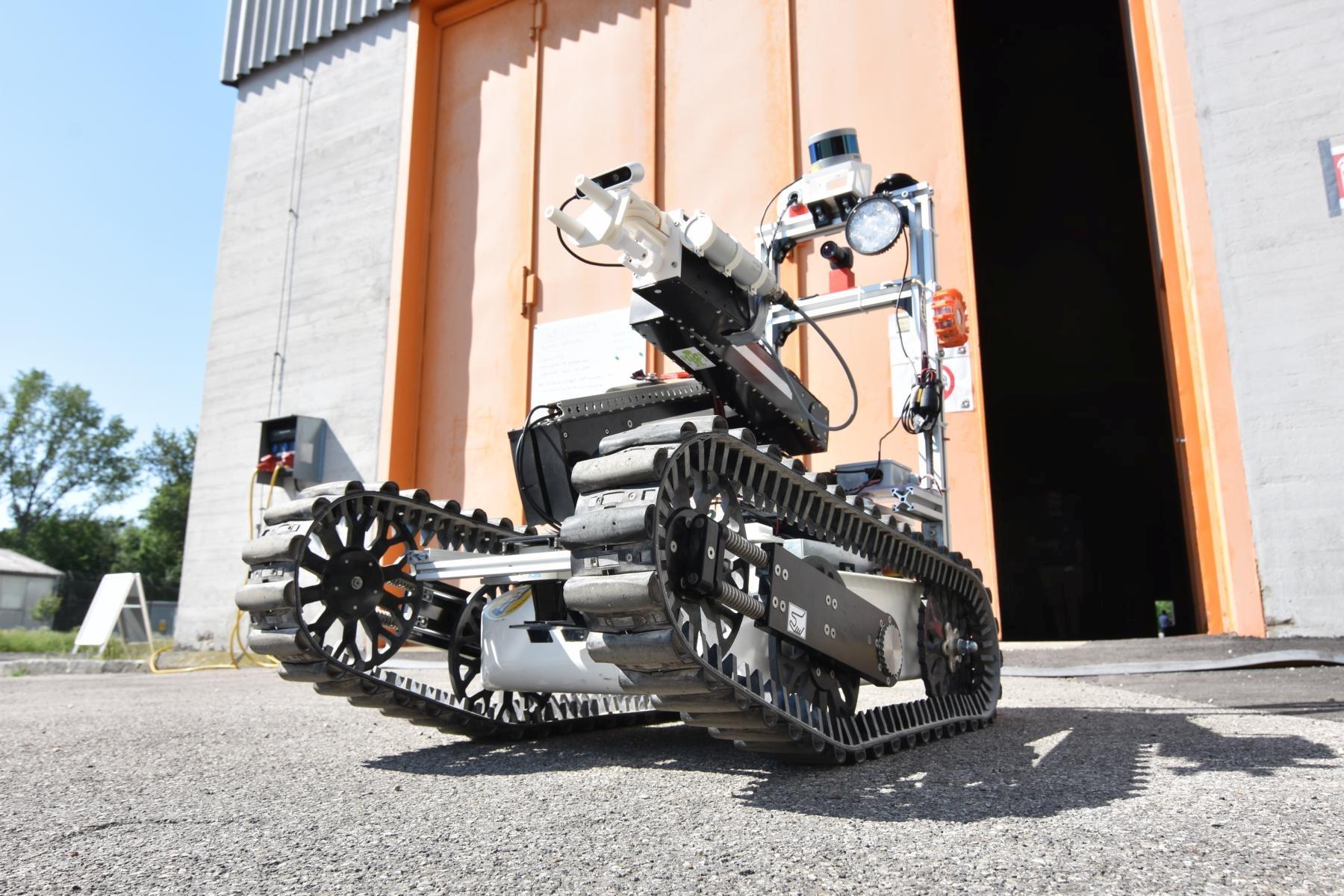Robots as disaster relief workers

07 September, 2023
On the occasion of an R&D project supported by the FFG, a team from the FH Technikum Wien is researching robots that will independently detect dangers in the field.
For more than fifty years, unmanned land vehicles have been used to protect or save human lives from a safe distance during the defusing of chemical or explosive substances. Advancing technologies are making these mobile robots increasingly intelligent and autonomous. In the future, therefore, they will also serve in the reconnaissance of and containment and decontamination of contaminated or irradiated areas. Ideally, in such situations, mechanical disaster responders may be able to determine the potential danger to humans. Such missions have been very dangerous because the extent of a nuclear, biological, or chemical (NBC) threat to human health is difficult to assess from a safe distance.
The UGV-ABC-Probe (UGV-based semi-autonomous NBC sampling) project will prepare a robot for such a mission. The “Offshore Working Class Robot”, which is particularly well equipped with its powerful arm, 3D sensor technology and a pressurized enclosure, serves as the starting point for this.
Technologically advanced first responders
Together with Taurob GmbH and the Federal Ministry of Defense, UAS Technikum Wien set itself the goal in the course of the FORTE defense research program to develop a ground-based robot within two years that can recognize and evaluate the potential danger of a nuclear, biological or chemical context. By the end of the project, this robot should not only be able to detect liquids, substances or gases autonomously, but also to take samples, evaluate them semi-autonomously and interpret them.
UAS Technikum Wien researches sensors
In the UGV-ABC-Probe project, the research team at the University of Applied Sciences Technikum Wien had the task of coordinating various sensor systems for the robot in such a way that they are suitable for detecting, classifying and evaluating liquids on flat surfaces. The Industrial Engineering Department also ensured that once the robot had completed its task, it could leave the sampling site and return to the operations center without external control and thus completely autonomously.
“The examination of the samples themselves is carried out remotely in the room via a teleoperator, which robotically takes, examines and analyzes the respective samples,” explains Wilfried Kubinger, head of the Department Electronic Engineering at UAS Technikum Wien.
Project nears completion
The project, which is in its final phase, has been extremely satisfactory. Several tests have already been successfully carried out in a realistic environment at the Austrian Armed Forces’ Tritolwerk NBC and disaster relief training site. In addition, a team from the University of Applied Sciences Technikum Wien took part in ENRICH2023 with their robots and was able to demonstrate the functionalities developed in the course of the project to an interested audience there as part of a hackathon. Currently, the project team is preparing intensively for the final demonstration of the project “UGV-ABC-Probe” in September at the Tritolwerk, where the developed functionalities will be presented.
With the knowledge gained in the project, the company Taurob GmbH is already working on a new robot in which, provided all further tests are also positive, the newly developed functionalities can be optionally installed.
Related images can be found here in the cloud folder:
https://cloud.technikum-wien.at/s/m4iKbZRgpmssasq
Copyright: UAS Technikum Wien
Project partner “UGV-ABC-Probe
Taurob GmbH
Federal Ministry of Defence
Further links
Questions & Contact
FH-Prof. Dr. Wilfried Kubinger (Sensor Technology), Wilfried Wöber MSc. (Robotics)
Department Electronic Engineering (Kubinger), Department Industrial Engineering (Wöber)
+43 1 333 40 77 – 2584 resp. -3157
kubinger@technikum-wien.at; woeber@technikum-wien.at


